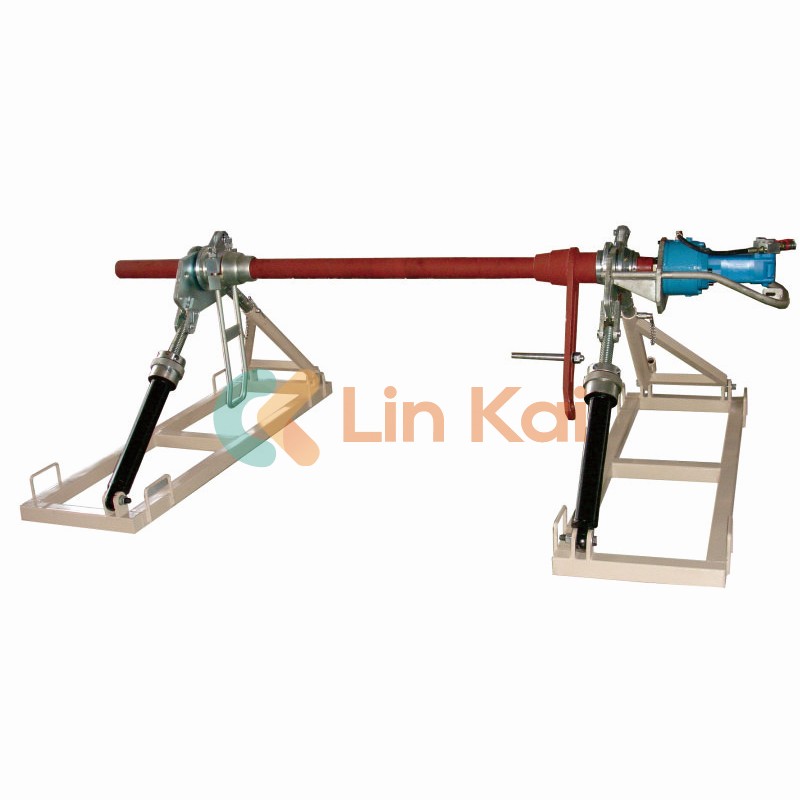
- English
- Español
- Português
- русский
- Français
- 日本語
- Deutsch
- tiếng Việt
- Italiano
- Nederlands
- ภาษาไทย
- Polski
- 한국어
- Svenska
- magyar
- Malay
- বাংলা ভাষার
- Dansk
- Suomi
- हिन्दी
- Pilipino
- Türkçe
- Gaeilge
- العربية
- Indonesia
- Norsk
- تمل
- český
- ελληνικά
- український
- Javanese
- فارسی
- தமிழ்
- తెలుగు
- नेपाली
- Burmese
- български
- ລາວ
- Latine
- Қазақша
- Euskal
- Azərbaycan
- Slovenský jazyk
- Македонски
- Lietuvos
- Eesti Keel
- Română
- Slovenski
- मराठी
- Srpski језик
Common faults and solutions of conductor reel stands.
The rotating shaft of the conductor reel stands is a key component that assumes both mechanical rotation and conductive functions. Its failure may lead to equipment downtime, conductive failure and even safety accidents.
Axis wear of abrasion marks appear on the shaft neck and the fitting surface, and the size becomes smaller, resulting in loose fitting or poor conductive contact. Insufficient lubrication or lubricant failure, resulting in direct friction of the metal; excessive coaxial deviation during installation, eccentric load is generated, and local wear is aggravated; dust and impurities in the environment enter the friction surface, forming "abrasive wear"; the hardness of the shaft material is insufficient or the surface roughness is not qualified.

Regularly check the lubrication system, select the appropriate lubricant according to the working conditions, and supplement or replace it according to the cycle; use a percentage meter to calibrate the coaxiality of the axis system to reduce the eccentric load; install a dust-proof sealing device to prevent foreign matter from entering; the key fitting surface of the shaft is quenched or chrome-plated to improve wear resistance.
The straightness of the shaft is very poor, and radial jump occurs when rotating, resulting in increased vibration, uneven bearing force, and even friction with other parts (such as stators). This is due to long-term overload torque or axial force, resulting in plastic deformation; excessive cantilever load during installation; partial overheating during operation, resulting in thermal deformation of the shaft; uneven force on the shaft during transportation or storage. Strictly control the load within the design range to avoid overload operation; optimize the structure of the axle system, reduce the length of the cantilever, and increase the auxiliary support if necessary; monitor the temperature of the shaft in real time (especially the bearing seat and the conductive contact part), and immediately stop and check when the temperature is abnormal; use multi-point support when storing or transporting (the support point is located on the shaft Both sides of the center of gravity), avoid single-point force.
Cracks or complete breakage of the shaft, causing a sudden stop of rotation, which may cause equipment damage or safety accidents. Fatigue fracture: long-term alternating load, resulting in cracks in the stress concentration of the shaft, gradually extending to fracture; material defects: there are pores, inclusions, or improper heat treatment during shaft forging or casting; impact load: sudden overload or external impact causing instantaneous stress to exceed the strength limit.Non-destructive testing is used in the manufacture of the shaft to eliminate parts with internal defects;Avoid frequent start and stop, and install a buffer device when the load fluctuates greatly;Regularly use magnetic powder flaw detection to detect cracks on the surface of the shaft, and repair or replace microcracks in time.
When the bearing fails, the bearing makes abnormal noise, overheating, and rotation jams, resulting in an increase in the rotational resistance of the shaft. Poor lubrication: insufficient lubricant, deterioration or model mismatch; the overload of the bearing is too large or too small, or knocking on the inner ring of the bearing during installation causes damage to the raceway; foreign matter intrusion: dust and moisture enter the bearing, wear out the raceway or roller; the bending of the shaft causes the bearing to be biased, and the roller has uneven contact with the raceway.
When installing the bearing, use special tools to heat and install to avoid hard knocking; replace the lubricant regularly and clean the residual impurities in the bearing seat before replacing; add a sealing cover to the bearing seat, and set up an oil ring on the outside of the bearing to prevent lubricant leakage and foreign matter from entering; regularly monitor the vibration value and temperature of the bearing, and replace the bearing in time when it exceeds the standard.
If you want more details, please contact us and we will answer for you within 24 hours.



